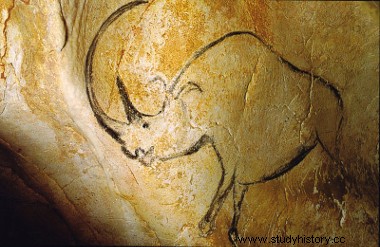
By Me. Tales Pinto
There are 425 animal figures, mainly 65 rhinos, 74 lions and 66 mammoths, engraved on the walls and stalactites of the walls of the Chauvet Cave. Discovered by chance by amateur cavers in 1994, the paintings present in the cave are considered the oldest known artistic productions.
The paintings in the Cave of Chauvet, located in the south of France, in the Vallon-Pont-dArc, are dated to somewhere between 30,000 and 40,000 years ago. This dating of the Chauvet Cave paintings makes them the oldest known to man. But that's not all that makes the Chauvet Cave paintings fascinating.
The most interesting thing is the level of elaboration of the pictorial representations. Techniques of shading the images, scraping the walls before painting them and the blurring of colors show the technical complexity developed by Paleolithic humans to artistically express their life experiences.
The cave is made up of several rooms where animals and human beings are painted, mainly parts of the human body, such as the hands or the womb of a woman. The perspective paintings and the impression of movement given to the animal paintings are impressive due to the artistic complexity in such a distant period of people's existence.

Rhino painted in Chauvet. The cave paintings at the site impressed researchers mainly due to their quality
The explanation for the preservation of the drawings lies in the fact that the main entrance to Chauvet Cave was closed around 21,000 years ago by rocks that precipitated after earthquakes in the region. . This situation prevented climate changes inside the cave that could contribute to the deterioration of the works of art present inside.
For this reason, as soon as it was discovered and communicated to the French authorities, the Chauvet Cave became a Historical Heritage site and its visitation was prohibited. An armored door closes the only entrance to the site, and a modern surveillance and climate monitoring system is also installed.
While virtual museums or replicas of the site are not created, Chauvet's Cave can be known through Werner Herzog's documentary, The Cave of Forgotten Dreams , making it possible for the spectator to go through all the galleries of the cave and follow, through the filmmaker's pleasant narrative, the explanations and descriptions given by the historians and other scientists who work in the place.
